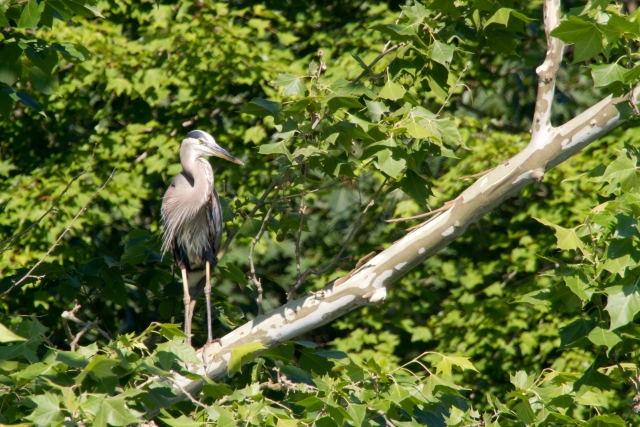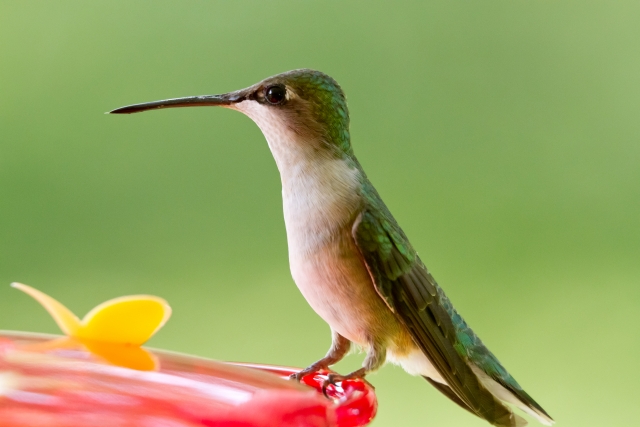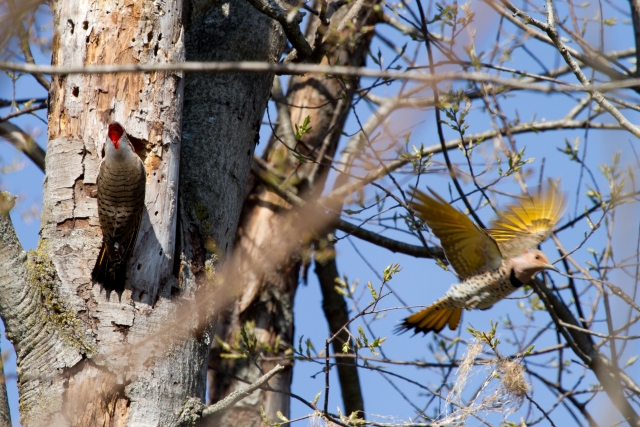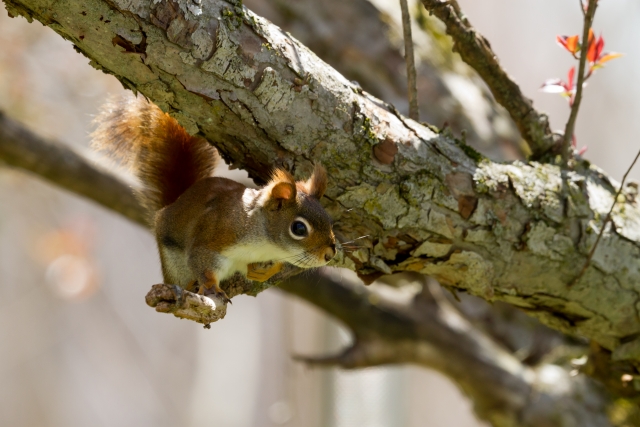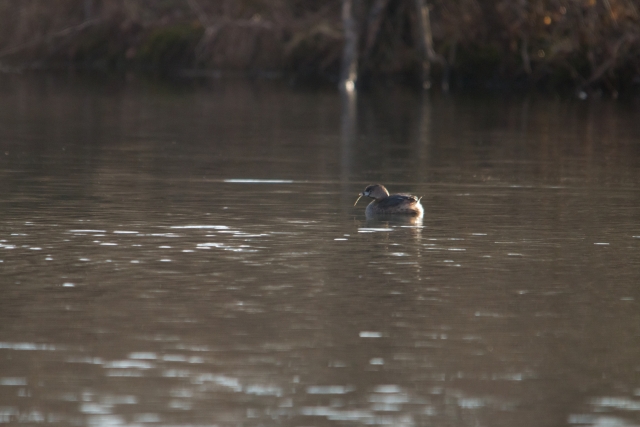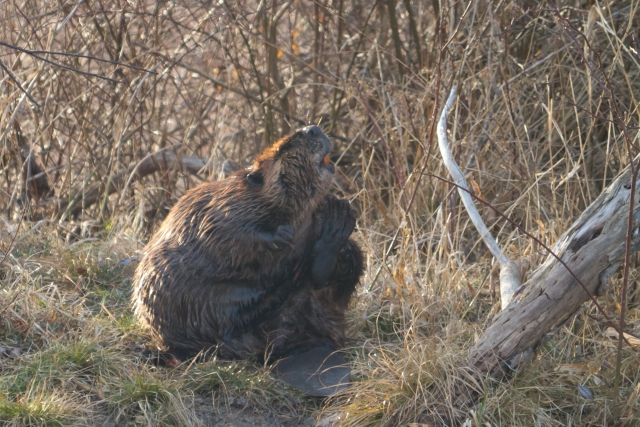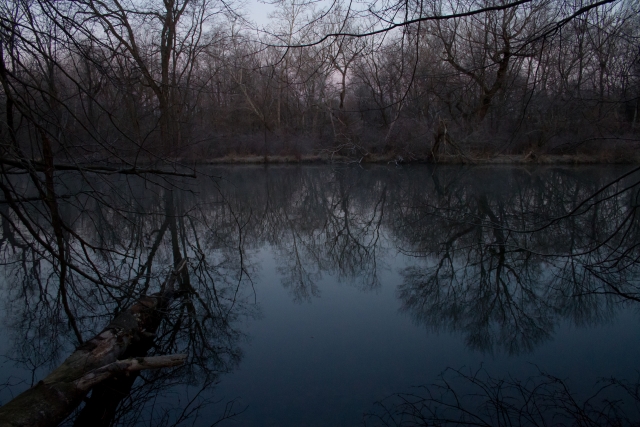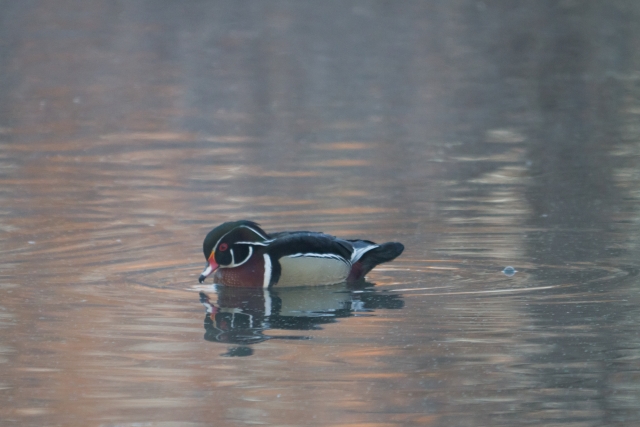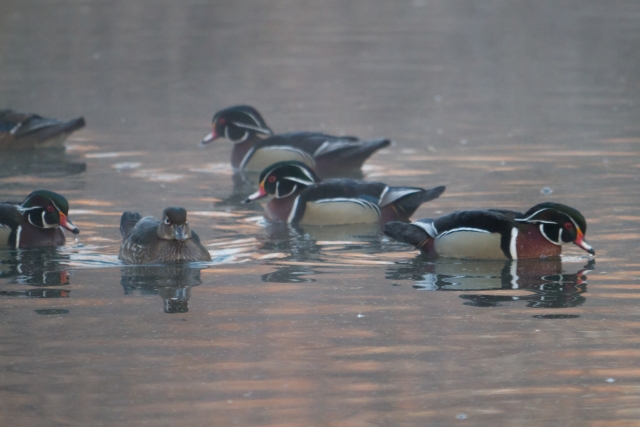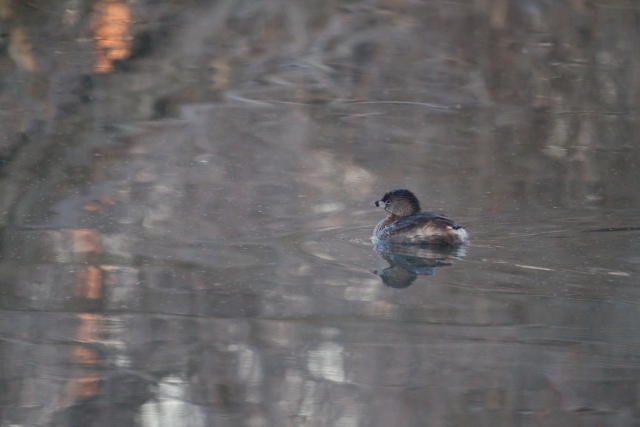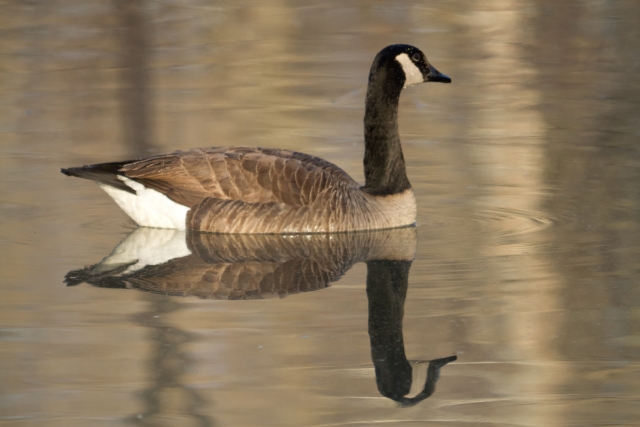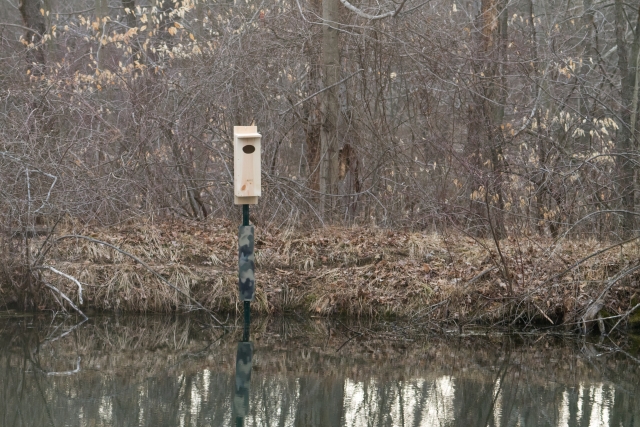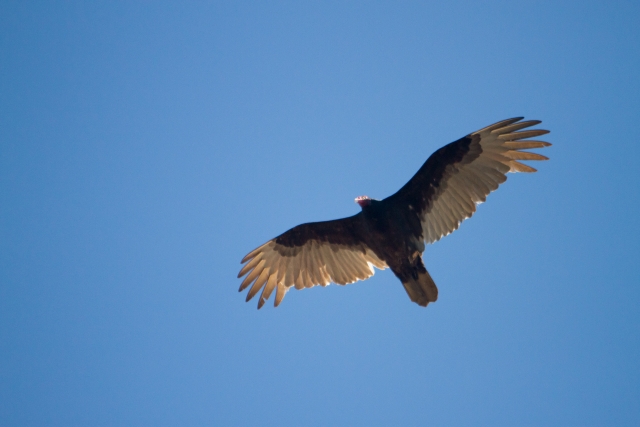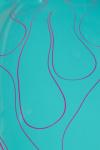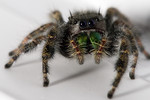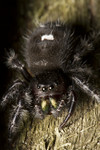telephoto
Poll: Hummingbird - Flash or No Flash?
ktuli — Wed, 07/23/2014 - 19:29
So here's a couple more shots of one of our hummingbirds (actually, it might be two different ones, but I'm not sure) taken with two different methods. Each one seems to have its own benefits and drawbacks, so I figured I'd put it to a vote... do you like this type of shot better with flash or without? Mouseover the thumbnails for the larger version, then cast your vote below.
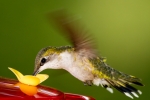 Flash |
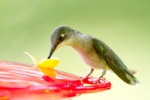 No Flash |
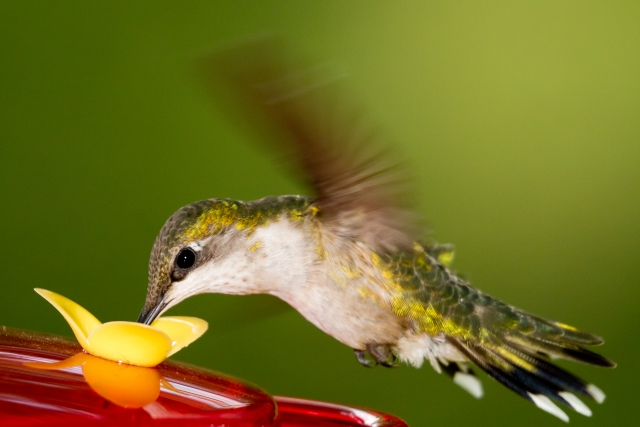 |
|
Technical Data: Canon EOS 7D, Canon EF 100-400mm f/4.5-5.6L IS USM (borrowed) at 400 with Kenko DG Auto Extension Tube (32mm), Flash: 1/1000 sec at f/5.6, ISO 800. No Flash: 1/250 sec at f5.6, ISO 1600. IS On. Canon Speedlight 580EX II flash in eTTL mode RAW conversion in Adobe Camera Raw.
I wish I could have had more similar images to compare, but I never managed to get a good shot of the hummingbird in flight without the flash (actually the flash would startle the hummingbird into flight and so most of those were of it in flight or just taking off). When using the flash, I am able to use high-speed-sync to get a high shutterspeed to freeze motion a bit more and also use a reduced ISO for less digital noise, but I feel it gives the image a bit more harsh look (that could potentially be mitigated with a diffuser that I might have to try next time). Without the flash, the image is given a much more natural look, but exposure becomes trickier. I do get more natural and calmer behavior from the bird without the flash, but with it does give that metallic reflection from the feathers...
So it is all about trade-offs, but which one do you prefer?
Thanks for stopping by!
- Bill
Two Birds with one Lens
ktuli — Tue, 07/22/2014 - 19:43
Well, so much for getting back to a more regular posting schedule...
I did manage to setup Tom's 100-400mm lens recently and got some decent bird photos. These are probably some of the best bird photos I've managed to date, so without any further ado I give you a pretty large bird and a fairly tiny bird, both shot with the same lens but in very different methods.
First up we have a Great Blue Heron (Ardea herodias) - we have these visit our pond with some regularity, but they still remain skittish and any attempt to approach them has proven difficult. This shot I managed from our front porch - I'd thought I used both a 2x and a 1.4x teleconverter on it, but the EXIF info is reporting only the 2x numbers, so I could be mistaken. One interesting thing here is that supposedly I shouldn't have been able to use autofocus for this shot, but I did. The Canon 7D (and most cameras) can only use autofocus is the maximum aperture value is larger than f/5.6. With this lens and any teleconverter, the effective maximum aperture is well above that mark (since the lens itself is f/5.6 and the teleconverters reduce that by 1, 2, or 3 stops if combined). However, putting the camera into live view and using the LCD to zoom in on my subject, I was then able to use AF without any issues at all. I'm sure the results aren't ideal - and that is evident if you look at this image at full size, but it certain had usable results here.
Technical Data: Canon EOS 7D, Canon EF 100-400mm f/4.5-5.6L IS USM (borrowed) at 400 with Canon EF 2x and 1.4x Telephoto Extender II, 1/640 sec at f/11. IS On. ISO 640. RAW conversion in Adobe Camera Raw.
This next one takes that same telephoto lens and uses it in a very different method. Instead of using teleconverters to extend its long distance capabilities, I instead used an extension tube to improve its close distance capabilities. I know the terms are confusing, but perhaps some day I'll write up the differences of teleconverters versus extension tubes, but for now just a quick explanation. Teleconverters are used to magnify the image, they usually come in 2x and 1.4x magnifications; their trade-off is that they reduce the amount of light coming into the camera and effectively make exposure more difficult. Extension Tubes are used to reduce the minimum focusing distance of a lens and by doing so provide a smaller degree of magnification; their trade-off is that they eliminate the lens' ability to focus on items farther away, but they do not affect the amount of light entering the camera.
Anyway, I used the Canon 100-400mm lens with a 32mm extension tube to allow for the lens to focus closer and provide a bit of magnification and pointed it at the hummingbird feeder on our porch. With patience, I managed to get a handful of shots using different methods - I'll share one today and a couple more soon.
Technical Data: Canon EOS 7D, Canon EF 100-400mm f/4.5-5.6L IS USM (borrowed) at 400 with Kenko DG Auto Extension Tube (32mm), 1/400 sec at f/5.6. IS On. ISO 1600. RAW conversion in Adobe Camera Raw.
As you can see, these are slowly improving. I'm happy to be able to start seeing the detail of individual feathers. I'll have to continue working on getting better results, but this is a nice step in the right direction.
- Bill
Nesting Northern Flickers
ktuli — Fri, 05/30/2014 - 08:29
Ok, so nothing near as detailed as what I got with the red-winged blackbirds, but I forgot that we did have some Northern Flickers nesting in a tree near our house. Their nest cavity was probably 40 feet up, so this was the best I could do to capture the changing of the guard as one flicker returned to the nest and the other took off. I wish I could have gotten the one in flight in focus, but it happened so quick, I didn't have a chance to change the focal point.
Technical Data: Canon EOS 7D, Canon EF 100-400mm f/4.5-5.6L IS USM at 400, 1/500 sec at f/8. IS On. ISO 320. RAW conversion and cropped in Adobe Camera Raw.
- Bill
Nesting Red-Winged Blackbirds
ktuli — Thu, 05/29/2014 - 06:37
So far this spring, we've seen nesting robins, geese, brown thrashers, phoebes, and red-winged blackbirds. I haven't been able to get photographs of all of them, but here's a series of a couple different red-winged blackbird nests...
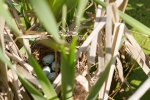 |
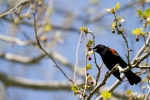 |
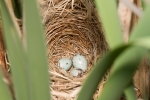 |
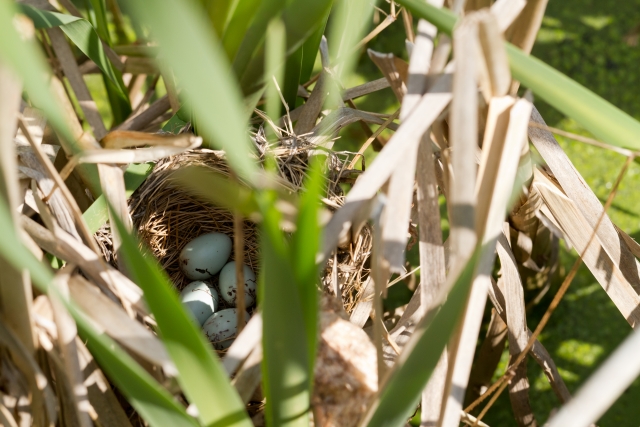 |
||
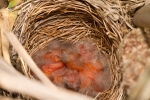 |
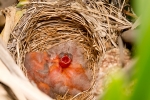 |
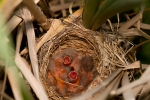 |
Thanks for stopping by. I'll try to keep them coming.
- Bill
Little Red Squirrel
ktuli — Tue, 05/20/2014 - 19:59
So I'm finally getting around to processing some photos from before my camera took a bit of a ciesta. It is since back from Canon and the repairs seem to be working. I still need to test the focusing to see if they did indeed clear up a soft-focus issue. Regardless, here's a shot of a tiny red squirrel that has been visiting since winter.
Technical Data: Canon EOS 7D, Canon EF 100-400mm f/4.5-5.6L IS USM at 400, 1/250 sec at f/8. IS On. ISO 640. RAW conversion in Adobe Camera Raw.
Hopefully I can get back into a more regular schedule of posting.
- Bill
Poll: Goose Reflection
ktuli — Wed, 04/09/2014 - 06:17
Ok - it has been quite a while since I've done a poll, so here goes...
Quick and easy one here - Which version is better? With the goose centered vertically or offset towards the bottom?
 Centered |
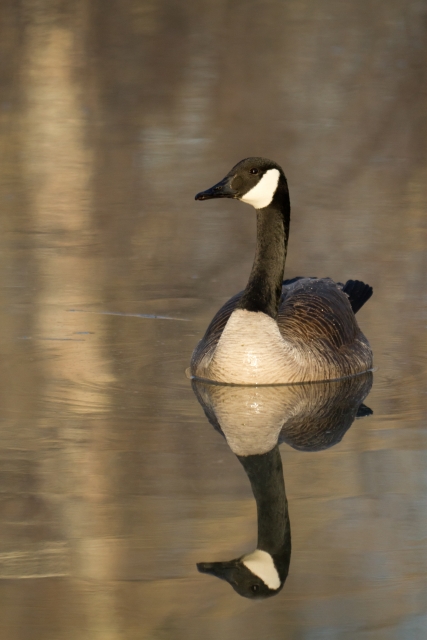 |
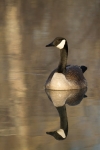 Offset |
Technical Data: Canon EOS 7D, Sigma 150-500mm f/5-6.3 APO DG OS HSM at 500mm, 1/1250 sec at f/6.3. OS Mode 1. ISO 800. RAW conversion and cropped in Adobe Camera Raw.
Cast your vote below!
- Bill
More Pied-Billed Grebe
ktuli — Wed, 04/09/2014 - 06:05
Here's a couple more shots of that Pied-Billed Grebe from the other day...
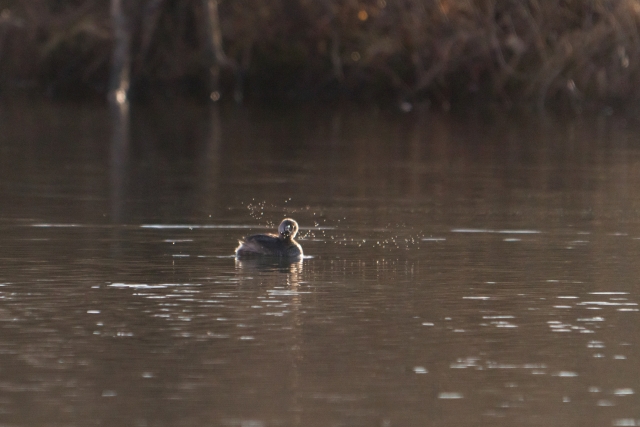 |
|||
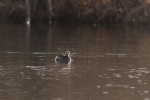 |
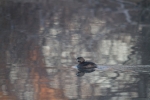 |
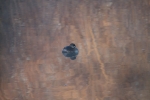 |
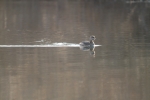 |
Thanks for stopping by.
- Bill
Blind But Still Can See
ktuli — Mon, 04/07/2014 - 19:50
Ok... time for a bit of a photo essay.
Saturday evening, Anya and I took a walk around the property. The initial goal was to see if we could sneak up on some wood ducks; we've been seeing them on the pond and bog with regularity and I've slowly been trying to get closer and closer. Well, to keep a long story slightly shorter, suffice to say that I wasn't successful.
However, as we walked back along the pond, we noticed a bird that we hadn't seen before. It was smaller and would completely dive under the water and disappear for a bit. Like all the birds so far, it was skittish, but like most diving birds I've experienced, its first instinct was to simply dive and swim further away rather that fly off. So with some patience, I managed to get some shots...
Technical Data: Canon EOS 7D, Sigma 150-500mm f/5-6.3 APO DG OS HSM at 500mm, 1/1000 sec at f/6.3. OS Mode 1. ISO 1250. RAW conversion and cropped in Adobe Camera Raw.
That is a Pied-Billed Grebe (Podilymbus podiceps). It isn't the flashiest of birds, but its diminutive size makes it somewhat cute, as does its mannerisms. I enjoyed watching it swim around on the pond, diving for fish, bugs, and other such morsels.
We sat along the bank quietly for a while, partially hidden by some tree branches and bushes. We saw a pair of Hooded Mergansers, but they didn't come in close enough for any shots, and eventually flew off.
As we sat there, we learned that our original theory that we have only a lone hermit male beaver living on our pond is incorrect as we saw two beavers out and swimming around at the same time. I don't know if they're a pair, but it will be something to keep an eye on in the future. I didn't manage to get any shots of the two of them together, but I did get some when this one hauled its surprisingly fat (considering I would have figured it would have been hibernating and lost some weight) hulk up on the shore where it proceeded to clean its fur and take care of some apparently irritating itches.
Technical Data: Canon EOS 7D, Sigma 150-500mm f/5-6.3 APO DG OS HSM at 500mm, 1/320 sec at f/6.3. OS Mode 1. ISO 1250. RAW conversion and cropped in Adobe Camera Raw.
It sure looks like that scratching is getting the job done, but check out that massive webbed hind foot, that ridiculously huge (and orange) tooth, and that big flat tail. You might also notice that the lighting for this photo is coming from the side and not from above. The sun was setting, and I was losing light fast.
Around that time, the batteries on my camera were dying and Anya offered to go get my spares. I stayed there and continued shooting while she went and got fresh batteries and another surprise.
For Christmas, Anya bought me a portable pop-up blind, so when she returned with that slung over her shoulder, it was a very nice surprise. We took a few minutes and set it up and climbed inside. From there we waited and watched to see what other visitors might come to the pond to take shelter for the night. Unfortunately, the light faded too quickly, and nothing came into a good spot to take any photos.
Finally, we called it a night and decided to head in. Fortunately, however, that isn't the end of the story. Research has taught me that the other best time for photography from a blind is at sunrise, so we made plans to wake up early the next morning and make our way to the blind before the sun came up.
What we didn't plan on was the temperatures dropping to the low 20s!!!
So the next morning, with heavy coats, hats, and gloves, we headed out the door carrying some folding chairs, some camera equipment, and mugs of hot tea (mine was of course in my trusty Canon lens mug). The grass was frosty, and the pond had a nice layer of fog rising from it. It certainly was a surreal experience...
Technical Data: Canon EOS 7D, Canon EF-S 18-55mm f/3.5-5.6 II at 18mm, 1/250 sec at f/5.6. ISO 2500. RAW processing Adobe Camera Raw.
After a big of waiting, and listening to the geese honking, the real stars of the show appeared. I believe Anya counted something like 19 or 20 Wood Ducks (Aix sponsa). These have to be one of the most stunning birds in North America, and I'll be honest and say that these photos don't even come close to doing them justice! But it is still a treat to be getting these, and I'll definitely be working on improving them next time...
Technical Data: Canon EOS 7D, Sigma 150-500mm f/5-6.3 APO DG OS HSM at 500mm, 1/200 sec at f/6.3. OS Mode 1. ISO 1250. RAW conversion and cropped in Adobe Camera Raw.
They just don't look real. Their colors (which aren't showing up so well here) are just amazing, and the crisp lines between them just defies any expectations. Even the females (the fourth from the right below) have a simple beauty about them with their white rimmed eyes and blue patches on their wings.
Technical Data: Canon EOS 7D, Sigma 150-500mm f/5-6.3 APO DG OS HSM at 500mm, 1/200 sec at f/6.3. OS Mode 1. ISO 1250. RAW conversion and cropped in Adobe Camera Raw.
After a while, the little Pied-Billed Grebe returned, and with the blind didn't mind getting closer for some better photos...
Technical Data: Canon EOS 7D, Sigma 150-500mm f/5-6.3 APO DG OS HSM at 500mm, 1/250 sec at f/6.3. OS Mode 1. ISO 800. RAW conversion and cropped in Adobe Camera Raw.
Eventually, the sun did come up and cast a beautiful golden glow on everything, but by then, all the wood ducks and the grebe had moved away from in front of the blind and all that was left were the geese.
Since they'd hung around all day, and the calm waters were producing such beautiful reflections, I figured why not! (I have a better shot to share later, but for now, here's one of them)
Technical Data: Canon EOS 7D, Sigma 150-500mm f/5-6.3 APO DG OS HSM at 500mm, 1/800 sec at f/6.3. OS Mode 1. ISO 800. RAW conversion and cropped in Adobe Camera Raw.
Finally, when all was said and done, we headed back in to warm up. After a hearty pancake breakfast, we headed back out where the temperature had shot right up to about 50F, and we spent the rest of the day working on completing the installation of two of our three wood duck boxes (well, one of them is for hooded mergansers, but you get the idea). That required some spray painting camouflage on the predator baffles we'd built out of PVC pipe, and working out some unforeseen situations. Eventually, we did get two of them installed. Here's a photo of one of them...
Technical Data: Canon EOS 7D, Sigma 150-500mm f/5-6.3 APO DG OS HSM at 150mm, 1/320 sec at f/5.6. OS Mode 1. ISO 800. RAW conversion and cropped in Adobe Camera Raw.
You can just barely see the camo covered baffle, huh?
Anyway, that was my weekend. How about you?
Oh, and I'll definitely be back with more photos from the pond - both from this outing and many more to come I'm sure.
- Bill
Coming out of Hibernation (part 3)
ktuli — Thu, 04/03/2014 - 08:12
Just an assortment today...
 Beaver |
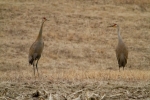 Sandhill Cranes |
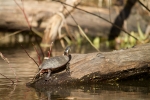 Eastern Painted Turtle |
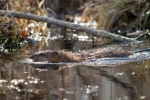 Muskrat |
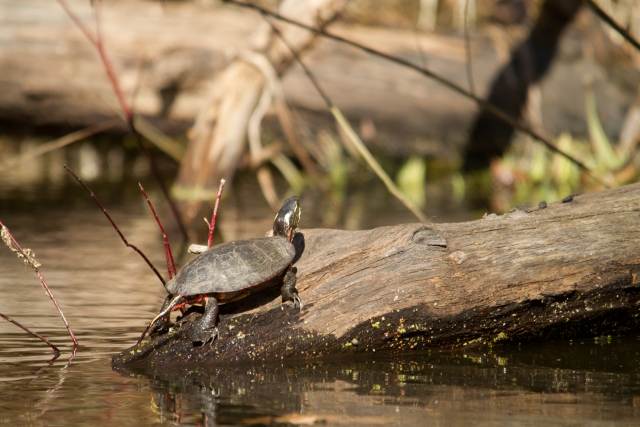 |
|||
Thanks for stopping by!
- Bill
Turkey Vulture in Flight
ktuli — Mon, 03/31/2014 - 19:52
I managed to get some shots of a turkey vulture that circled over the yard the other day. Not necessarily the coolest or even an attractive bird, but I felt I was able to correct some of the problems with the sandhill crane photos from last week. There was still a significant amount of noise and reducing that did take away some of the sharpness, but I felt the results were still worth sharing...
Technical Data: Canon EOS 7D, Sigma 150-500mm f/5-6.3 APO DG OS HSM at 500mm, 1/2000 sec at f/6.3. OS Mode 1. ISO 640. RAW conversion in Adobe Camera Raw.
I still haven't been able to get any good shots of the more exotic visitors, but I'll keep trying.
Hopefully we're done with the snow and cold and I can start bug hunting too!
- Bill

